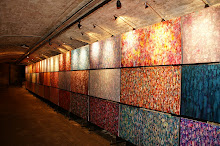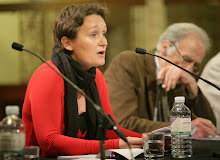You aren’t at school today. You follow your parents up the path into the mountains, looking for grasses and plants with edible roots. You have coupons but there’s no food. Your parents are thinner than you; in the Democratic People’s Republic of Korea children are always fed first.
Your country is crossed by many mountain ranges. It’s hard to find the land to grow food, and the season is short. Your teacher told you how between 1961 and 1988 your country doubled the food it could produce by using marginal slopes, irrigating them by pumping water from reservoirs connected by thousands of kilometres of waterways. Your people were proud to be self-reliant.
But everything took energy. It took electricity to pump the water and manufacture fertilisers. It took oil to run the power stations. When the Eastern Bloc collapsed in 1991 cheap oil imports ended and power cuts stopped farming. The land dried out. Heavy storms caused floods that destroyed the power stations. When the drought hit the reservoirs were dry.
You call the famine that killed two million people ‘The Arduous March’, but it hasn’t stopped. Today thirty seven percent of North Korean children are severely malnourished and your leaders rely on food aid from China, Japan, South Korea and the United States.
skip to main |
skip to sidebar







According to the UNFPA the population of the world increases by 1.2% a year.
That's 235,000 a day.
That's 235,000 a day.
GENE MEME is a blog, art installation and outreach programme about world population.
The GENE MEME art installation took place in the Crypt Gallery in London from 9 June to 20 June 2010.
The GENE MEME art installation took place in the Crypt Gallery in London from 9 June to 20 June 2010.
GENE MEME was supported by a debate asking what should be done about rising population.



Links to posts
- Ancestral Pueblo culture
- Angkor
- Antioch
- Bodmin Moor
- Cahokia
- China’s Great Leap Forward
- Classical Greece
- Easter Island
- Ephesus
- Fatehpur Sikri
- GENE MEME
- Hawaii
- Hispaniola
- Holodomor
- Illinois
- Juana Maria
- Kaskaskia
- Madagascar
- Minimata
- North Korea’s ‘Arduous March’
- Pitcairn Island
- Rabbits in Australia
- Rwanda
- Smallpox
- St Kilda
- St Matthew Island
- Sugar
- The Aleuts
- The American Dustbowl
- The ancient Olmec civilisation
- The Aral Sea
- The burial of Riez
- The collapse of the Nasca
- The decline of Bruges
- The deforestation of Ethiopia
- The extinction of the Moa
- The Florida Everglades
- The Gambier trade triangle
- The great civilisation of Sumer
- The Harappan Culture
- The Irish potato famine
- the last Nicoleňo
- The last passenger pigeon
- The Mayan civilisation
- The pleistocene extinctions
- The Sahel
- The Vikings in Greenland
Search This Blog

